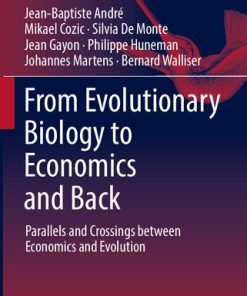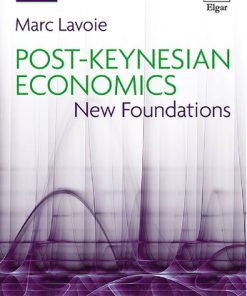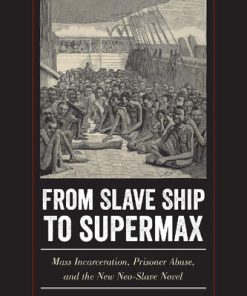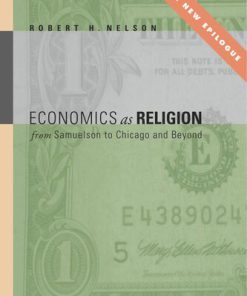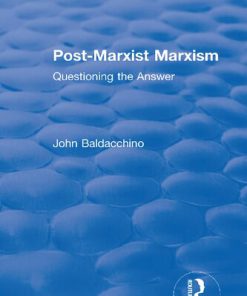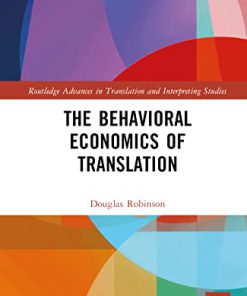Neo Marxism and Post Keynesian Economics From Kalecki to Sraffa and Joan Robinson 1st Edition by Ludo Cuyvers ISBN 9781032254807 1032254807
$50.00 Original price was: $50.00.$25.00Current price is: $25.00.
Neo Marxism and Post Keynesian Economics From Kalecki to Sraffa and Joan Robinson 1st Edition by Ludo Cuyvers – Ebook PDF Instant Download/Delivery: 9781032254807 ,1032254807
Full download Neo Marxism and Post Keynesian Economics From Kalecki to Sraffa and Joan Robinson 1st Edition after payment
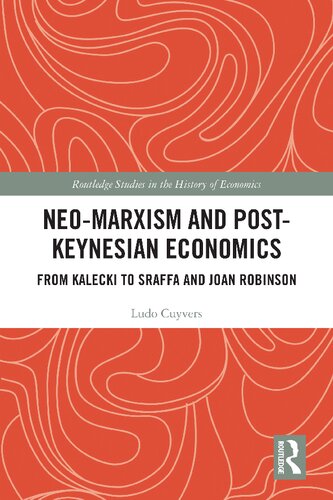
Product details:
ISBN 10: 1032254807
ISBN 13: 9781032254807
Author: Ludo Cuyvers
Neo Marxism and Post Keynesian Economics From Kalecki to Sraffa and Joan Robinson 1st Edition Table of contents:
Part 1 Post-Keynesian neo-Marxism: the trajectory
1 The core of Marx’s economics and the monopolisation of capitalism: an introduction to some major issues
2 The Oxbridge connection: Sraffa, Kalecki, Steindl
2.1 Piero Sraffa’s notes and publications
2.2 The Kalecki–Steindl nexus: some biographical data that are relevant to our story
2.3 Capitalist long-run economic development: the views of Kalecki and Steindl in a nutshell
3 The other side of the Atlantic
3.1 Influence of Kalecki’s neo-Marxism on Baran and Sweezy: evidence from the Baran−Sweezy correspondence
3.2 Baran and Sweezy’s Monopoly Capital
4 Piero Sraffa and Joan Robinson: two directions of post-Keynesian neo-Marxism
4.1 Sraffa’s way: picking up the thread where it was left by Ricardo and Marx
4.2 The Robinson direction: building on Keynes, Marx, and Kalecki
5 What remains of post-Keynesian neo-Marxist economics? An unfinished integration
Part 2 Piero Sraffa’s neo-Marxist theory of value and distribution
6 The work and life of Piero Sraffa
6.1 Sraffa’s life and work: a short overview
6.2 Sraffa as a Marxist
6.3 Sraffa’s circular flow model and some relevant results
6.3.1 Sraffa’s price equations
6.3.2 The standard system
6.3.3 Joint production
6.3.4 Switching and re-switching of production techniques
6.3.5 Basic and non-basic commodities
6.4 Long road towards Production of Commodities by Means of Commodities
7 Let one hundred schools of thought blossom …: some major differences compared with Marx
7.1 Embodied labour as the substance of value
7.2 Sraffa’s wage rate and Marx’s social necessary consumption
7.3 The rate of profits as derived from the system of physical input–output flows
7.4 The role of “luxuries” and “non-basics”
7.5 Taking a “snapshot” or investigating the economy in normal reproduction?
7.6 Joint production
7.7 Marx’s falling rate of profits and the organic composition of capital
Appendix 1: Sraffa’s “non-basics” and Marx’s average rate of profits
Appendix 2: The inequalities approach of the labour theory of value with normal reproduction
8 How were Sraffa’s theoretical insights received by the Marxists? A timeline
8.1 The first reactions
8.2 The early 1970s: intensifying discussions among Marxists
8.3 The late 1970s: cold war, guerilla warfare, and attempts at “peaceful coexistence” between Marxists and Sraffians
8.4 The 1980s and after: digesting and revising the labour theory of value
9 What to conclude?
Part 3 Joan Robinson: Modelling capitalist economic growth with Marxist and neo-Marxist ingredients
10 Joan Robinson’s life: a short overview
11 Robinson’s theory of economic growth and accumulation in a nutshell
11.1 Profits realisation mechanism
11.2 Capitalists’ “animal spirits” and their interaction with the realisation mechanism
11.3 Factors constraining the maximum attainable rate of growth
11.4 Technical progress, equilibrium
11.5 Logical time versus historical time – history versus equilibrium
11.6 Monopolisation, underconsumption, stagnation
12 Joan Robinson’s and Marx’s model and concepts compared
12.1 Robinson’s “basic model” and Marx
12.2 Robinson’s production model and the Marx–Sraffa model
12.2.1 Labour as the sole unproduced factor of production
12.2.2 Homogeneous labour
12.2.3 Constant production coefficients
12.2.4 Closed economy
12.2.5 Reproduction schemes
12.3 Robinson’s normal prices and Marx’s prices of production
12.4 Robinson’s views on the labour theory of value
12.5 Real and nominal wage rates: “inflation barrier”
12.6 Robinson’s definitions of “surplus”
13 What is Joan Robinson’s indebtedness to Sraffa?
13.1 Sraffa’s 1926 Economic Journal article and his 1928–1929 lectures
13.2 Measurement of capital
13.3 An Essay on Marxian Economics
13.4 Sraffa’s introduction to Ricardo’s Principles
13.5 Sraffa’s Production of Commodities by Means of Commodities
14 Robinson’s model of economic growth compared with Marx and the post-Keynesian neo-Marxists of the 1940s and 1950s
14.1 Rate of accumulation and Robinson’s “animal spirits”
14.2 Rate of accumulation as a function of the expected rate of profits
14.3 Secular behaviour of the rate of profits
14.4 Technical progress
14.5 Conditions of steady economic growth
14.6 Monopoly capitalism, underconsumption, and stagnation
14.7 Underconsumption and stagnation: counteracting factors
15 What has remained of Robinson’s post-Keynesian neo-Marxism?
Index
People also search for Neo Marxism and Post Keynesian Economics From Kalecki to Sraffa and Joan Robinson 1st Edition:
You may also like…
Science (General) - Theories of Science
Business & Economics
Business & Economics - Econometrics
Post Keynesian Economics New Foundations 2nd Edition by Marc Lavoie ISBN 9781839109614 1839109610
Uncategorized
Business & Economics - Others
Uncategorized
Linguistics - Sociolinguistics
The Behavioral Economics of Translation 1st Edition Douglas Robinson
Uncategorized



